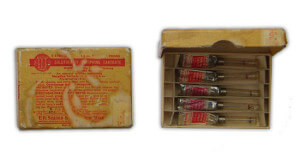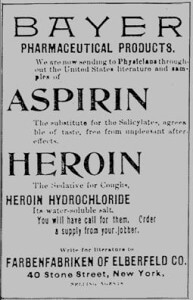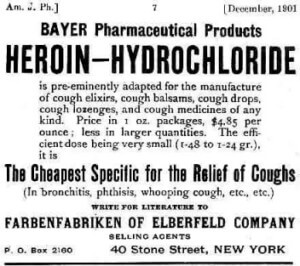Hidden Addictions
This story doesn’t have a lot to do with relationship advice – but was something interesting I thought I would share. You see I have gone through a difficult time in the past two weeks which has taught me a few interesting things about addiction.
Up until a few weeks ago I had been in such a productive stage of my life; This year already I have written Your Blind Spot; built a couple of big websites for clients; and put together a regular dinner dance that Steve and I have been running at a local community hall.
Then out of the blue about two or three weeks ago I got a headache that wouldn’t quit and have been feeling dizzy and unwell. For weeks I believed I was suffering from a virus with symptoms that really started to get me down. In the meantime my research continued and I have been delving into the history of addiction:
I am still in the process of researching this … but I believe I may have uncovered a possible role that addiction may have played in the flu epidemic of 1919 …
First I read a story (in a medical journal) linking the ‘spanish flu’ deaths of 1919 to doctors over prescribing aspirin. This seems fairly well documented and I believe from a scientific journal.
I then learned that prior to 1919, the world had a major opiate addiction problem and that it was around this time opiates were made illegal for doctors to prescribe.
Next I stumbled over a paper describing opiate withdrawal symptoms mimicking the flu – and a possible picture of what may have happened started forming in my mind.
Heroin had been for sale since 1898. There was no such thing as a prescription back then and people bought it everywhere, including mail order sales from the Sears catalog; sometimes complete with a case of syringes.
Earlier in the 1800’s, morphine (another opiate) had been praised as God’s own medicine. This was understandable when you consider that operations, amputations and teeth being pulled had previously all been done with little or no pain relief. By the turn of the century however it was being sold as a cure all for many ailments and was included in more than a hundred different products (for more than a 100 different ailments), even included in candy for children and teething soothing mixtures for babies. By the time people realized morphine was addictive the number of addicts in the world could not be estimated with any accuracy.
When heroin came along it was claimed to offer all the same benefits as morphine but with none of it’s habit forming properties. Heroin was recommended to treat morphine and opium addiction. Under this mistaken belief missionary’s even took heroin tablets to China calling them ‘Jesus Pills’ distributing them along with Bibles to the multitude of opium addicts in that country.
By 1914 the US had seen that of course heroin had only escalated the problem of addiction and drug enforcement laws – instituted through a licensing tax – were brought in for the first time in the US.
The use of opiates in the trenches in WWI was likely to have continued however until a complete ban was finally brought in on doctors prescribing morphine to addicts. There is evidence that morphine vials were in fact part of the kit that was distributed to soldiers in WWI. With so many addicts around and conditions so totally unbearable it seems certain that these vials would have been popular and in big demand.
Now I am not saying this is what happened and admit this is speculation – but lets just imagine if …
A lot of those cases of flu in 1919 were in fact soldiers coming off of an opiate addiction, when for one reason or another their supply of morphine was cut off around flu season. Doctors then might have come along prescribing lethal doses of aspirin, out of ignorance, but also partly because they were no longer able to prescribe morphine. They had been told aspirin was a safe alternative and had no idea of the danger in the large doses being recommended for the ‘killer flu’.

Then when their patients died of course it was attributed to this same ‘killer flu’.
Civilians, likewise withdrawing from morphine and heroin might have run to their doctor thinking they had this flu too and in turn would have been given aspirin at the same lethal dosage. Going through the ravages of opiate withdrawals, my bet is that they would willingly take massive doses of any painkiller they could get their hands on.
This might explain why so many young adults died of flu that year (20 to 50 million casualties) when normally it is the elderly and very young who are at risk.
While I was doing this research on addiction, I stumbled on the symptoms of caffienne withdrawal and it suddenly dawned on me that I didn’t have a virus at all.
You see working harder than I have in a long time this year I had started to drink coffee again and some days I was drinking coke as well.
I am very sensitive to caffine however and so after a few months of not sleeping well, and without even thinking about it much, I decided it was time to give it up. I now recall that my headaches had started about that time. The problem was because I didn’t know I was going through withdrawals and wasn’t very vigilant about not letting cafenated drinks slip back in. So after 2 days of withdrawals I would have a glass of coke – feel better for awhile but then the withdrawals would get drawn out even longer when I stopped taking any caffine again for the next few days.
So while I was studying about the possibility of opiate withdrawals being misdiagnosed as flu – it turned out a similar kind of thing was happening to me.
Luckily I am pretty good at taking care of myself and so I hadn’t rushed to take anything dangerous for the virus I thought I had.
Okay so that’s my story for today and while nothing to do with narcissism or codependence it is the most interesting thing my research has uncovered this week.
I wonder if last week you read my article on the roles women sometimes play in marriage? If not you can read it here: Marriage on the Rocks?
I would love to hear what you thought of that article in the comments section below. It would also be great if you might share with us the most interesting thing you have encountered this week 🙂
I don’t know when (or if) I will ever get around to building a forum on this site – so for now let’s make my new weekly posts a place we can all talk to each other 🙂 what do you think?
I am not having anymore coffee or coke – and I can’t believe how hard that has been – but really pleasure is so easy to find in such simple places as a sunny spot in the garden!




This Post Has 0 Comments